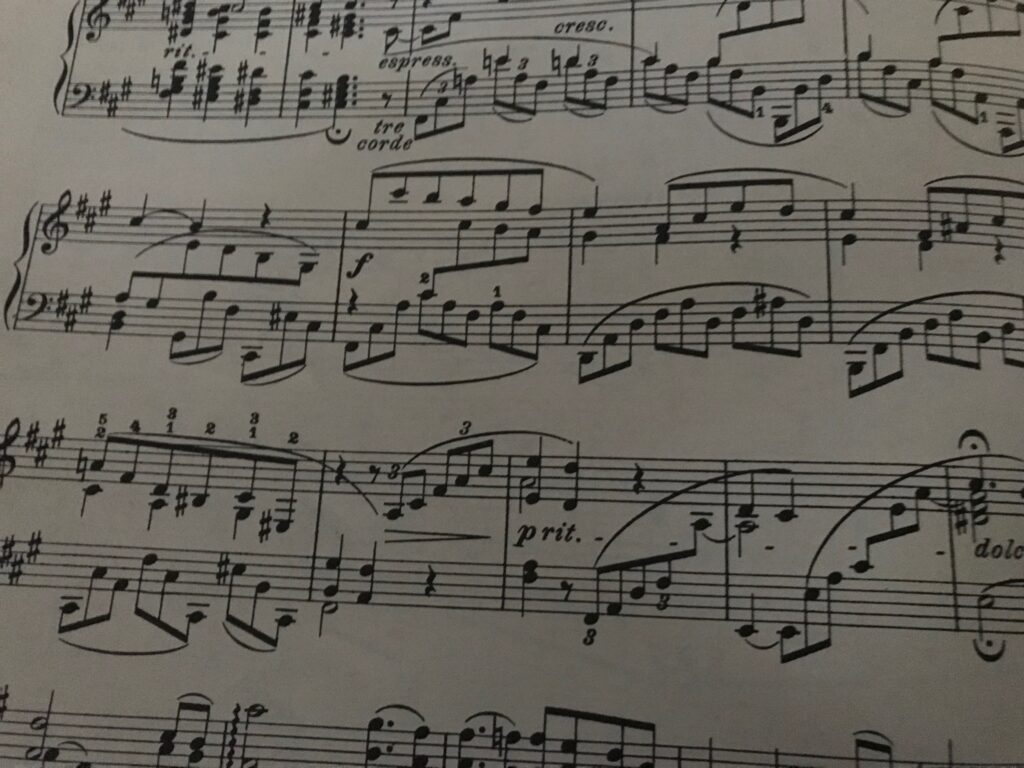Two Against Three

The Brahms Intermezzo in A Major Opus 118 No. 2 asks questions with no answers. It’s a wistful, nostalgic piece, one I’ve played for years. Several passages feature what I’ve always called “two against three,” but which I’ve learned is also called a polyrhythm.
I’ve been playing this rhythmical pattern so long that I don’t think much about it, but it was difficult at first. It’s a little like rubbing your stomach while patting your head. In the intermezzo, it’s playing four eighth notes with the right hand as the left attempts a ripple of six triplets. “Attempts” is the operative word. My fingers are too short to ripple out notes that range across the keyboard as Brahms’ do.
Still, I try. And as I do, I ponder all the feelings the notes contain, how the right hand holds back as the left hand rushes forward. Some of the highest notes of the piece, the A, the C sharp, are played in this configuration. There is a reaching, a yearning, a sense of never quite attaining one’s heart’s desire. And in fact, Brahms dedicated these pieces to Clara Schumann, the woman he loved but could never marry.
To play these particular eighth notes against these particular triplets is to hold two truths at once: the head, the heart; the will, the reality. It is the story of life, in a handful of notes.